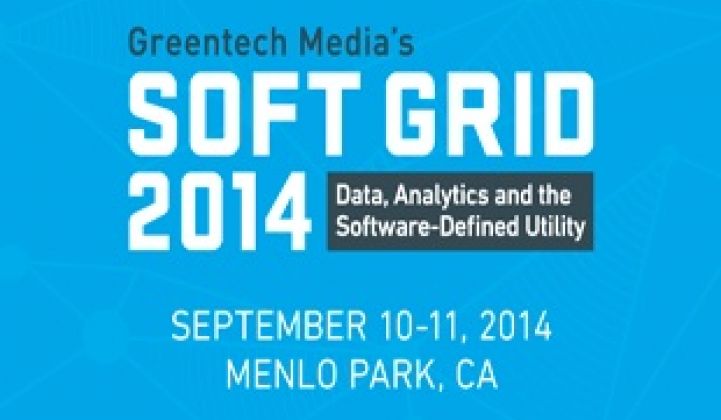Are data analytics the most important frontier for utilities seeking to modernize their businesses? Or is it just another buzz phrase pushed by companies selling software?
At Greentech Media’s Soft Grid 2014 conference this September in Menlo Park, Calif., we’re sure to hear a variety of opinions on this matter. Luckily, GTM Research has also been collecting some hard data on the subject through its Grid Edge Deployment Tracker data service.
In North America alone, the database has tracked more than 200 data analytics deployments over the past four years -- enough to derive some insight into how utilities are starting to invest in this field, and which categories of analytics they’re aiming to master first.
Here are the results, both in absolute terms and tracked from year to year. As these charts make clear, while utilities see plenty of value in analyzing data to improve grid operations or manage their enterprise, it’s the consumers who are getting the most attention.
North American Soft Grid Deployments by Submarket, 2010-2014

Source: GTM Research
North American Soft Grid Project Announcements by Submarket

Source: GTM Research
Andrew Mulherkar, associate grid analyst for GTM Research, explained that this data is as up to date as possible, but still doesn’t include projects that haven’t yet been publicly announced. Since we’re only two-thirds of the way through the current year, it’s likely that the number of projects that have commenced in 2014 is greater than those represented in the charts.
These trends hold clear across utilities both large and small, indicating that it’s not just the biggest investor-owned utilities that are finding the budgets for analytics solutions, he said. At the same time, large utilities tend to be leading the way in the most ambitious enterprise-wide data analytics projects, such as C3 Energy’s work with Baltimore Gas & Electric.
As for the preponderance of consumer analytics, Mulherkar pointed to several factors driving that trend, including the regulatory and political focus on encouraging utilities to share the benefits of technology with their customers, as well as the potential threat of other parties stealing away the customers.
“It would appear the pressing need is just to get to these consumers and manage demand,” he said. GTM Research’s definition of consumer analytics includes customer web portals and mobile applications, as well as the design, planning and optimization of energy efficiency, demand response and variable pricing programs -- a category that includes many well-known technology providers like Opower, C3, Oracle, Aclara, Harris, Siemens/eMeter, Silver Spring Networks and others.
All of these are getting attention from utilities, whether or not they’ve made hefty investment in more grid-centric technology. State mandates for energy efficiency or consumer data presentation may also be driving these investments. California utilities are particularly involved in these efforts, with some like Pacific Gas & Electric working with multiple parties (C3, Opower and Pulse Energy) to deliver analytics for residential, small-to-medium businesses and large commercial and industrial customers, Mulherkar noted.
At the same time, “consumer analytics is also a space where utilities are trying to get a foothold as they struggle to compete for attention with all these different vendors offering energy services to their customers,” he said.
As a recent report from consultant Booz Allen Hamilton points out, utilities are lagging behind other private- and public-sector industries when it comes to extending digital communications technologies to their customers -- a discrepancy that could increase their risk of losing customers to more technologically adept competitors in years to come.
Grid analytics is the second most popular category, and includes a number of technologies that seek to make use of existing and new sources of data to optimize grid operations and planning. Companies such as Integral Analytics, EDD, Power Analytics (now owned by Causam) and GRIDiant (now owned by Landis+Gyr) fall into this category, and a whole host of smart-meter-data-to-grid-insight players are also entering the fray.
As for enterprise analytics, GTM Research is tracking traditional business intelligence tools like report generation, active discovery and data visualization as they expand beyond individual utility business units to be applied in a broader context. Products of note here include ABB/Ventyx/Obvient's FocalPoint software, as well as SAP HANA, Oracle Business Intelligence Enterprise Edition, and similar tools.
Data management includes underlying data warehouse and historian systems such as Apache Cassandra, Teradata Enterprise Data Warehouse, OSIsoft PI and the like, while visualization pertains to advanced geospatial and business intelligence platforms such as those offered by Space-Time Insight and SAS Visual Analytics.
To learn how to effectively manage, analyze and take action on the data generated by grid networks, join Greentech Media at The Soft Grid: Data, Analytics and the Software-Defined Utility conference on September 10-11, 2014 in Menlo Park, Calif. We look forward to seeing you there!




